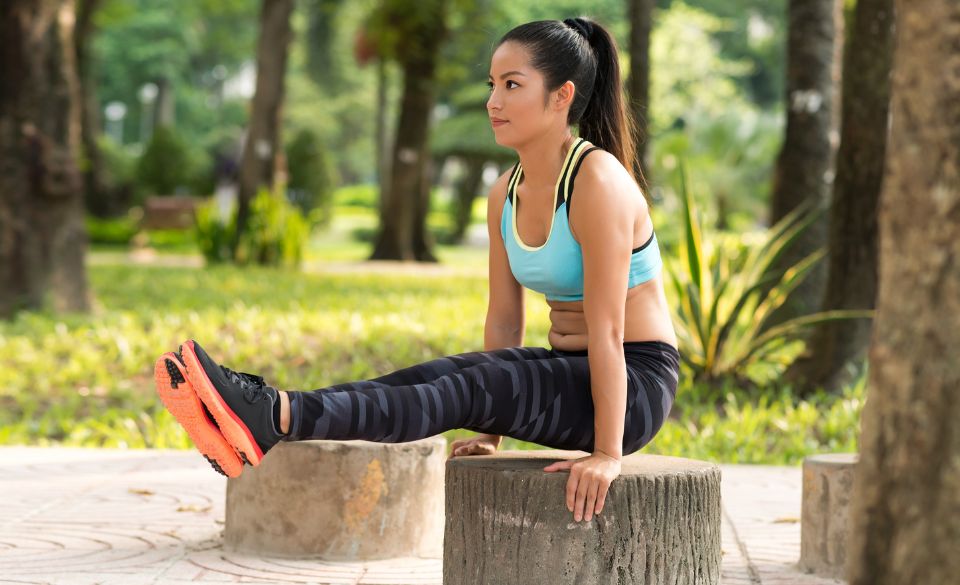
A Beginner’s Guide To The L-Seat Lift
Page Contents
Hey there, fitness enthusiasts! Are you ready to take your core strength and flexibility to new heights? Today, we’re going to dive into the wonderful world of L-seat lifts and explore why they are such an incredible exercise for your body. So, let’s buckle up and get ready to soar!
What Is an L-Seat Lift?
Now, you might be wondering, what exactly is an L-seat lift? Well, imagine yourself sitting on the floor with your legs extended in front of you, forming an L shape with your body. Now, lift your legs off the ground while keeping your hands firmly planted on the floor. That’s the L-seat lift! It might sound simple, but don’t be fooled – it’s a challenging move that targets multiple muscle groups.
Why Is an L-Seat Lift So Hard?
Ah, the million-dollar question! The L-seat lift is known for being particularly challenging due to the strength, flexibility, and stability it demands. It requires a combination of core strength, hip and hamstring flexibility, and upper body strength to maintain that lifted position. Plus, it also calls upon your balance and coordination skills. Don’t worry if you can’t do it right away – it takes time and practice to build up the necessary strength and flexibility.
What Are the Benefits of L-Seat Lifts?
Now, let’s talk about the fantastic benefits that come along with mastering the L-seat lift. First and foremost, this exercise is a killer core workout. It engages your abdominal muscles, including the rectus abdominis, obliques, and transverse abdominis, helping you build a strong and stable midsection. Additionally, L-seat lifts also target your hip flexors, quads, and upper body, including your shoulders, triceps, and chest.
Moreover, L-seat lifts can improve your overall body control and stability. By challenging your balance and requiring you to engage multiple muscle groups simultaneously, this exercise enhances your proprioception and strengthens your mind-muscle connection. It can also contribute to better posture, as it engages your back muscles and encourages proper alignment.
How to Perform an L-Seat Lift
Are you ready to give L-seat lifts a go? Great! Here’s a step-by-step guide to help you get started:
1.Sit on the floor with your legs extended in front of you, toes pointed.
2. Place your hands on the floor beside your hips, fingers pointing forward.
3. Engage your core and lift your legs off the ground, keeping them straight.
4. Try to bring your legs parallel to the floor, forming an L shape with your body.
5. Keep your shoulders down and away from your ears, maintaining a strong upper body position.
6. Hold the L-seat position for as long as you can, aiming to increase your endurance over time.
7. When you’re ready to lower your legs, do so with control, and then rest before attempting another set.
Remember, it’s important to start at a level that challenges you but still allows you to maintain proper form. You can begin with bent knees and gradually work your way towards straightening your legs as you get stronger and more flexible.
Muscles Worked
When you perform L-seat lifts, you’re giving your body a comprehensive workout. This exercise primarily targets your core muscles, including your abs, obliques, and deep stabilizers like the transverse abdominis. It also engages your hip flexors, quads, and the muscles in your upper body, such as your shoulders, triceps, and chest.
The core muscles, including the rectus abdominis, are essential for maintaining stability and proper posture. By engaging these muscles during L-seat lifts, you strengthen them and enhance your overall core strength. Strong core muscles also contribute to improved balance and stability in various physical activities.
The hip flexors play a crucial role in lifting your legs off the ground and maintaining the L-seat position. These muscles, located in the front of your hips, are responsible for flexing your hip joint. Regularly working the hip flexors during L-seat lifts can help increase their flexibility and strength, which can be beneficial in other exercises and daily movements.
Additionally, your quads, which are the muscles at the front of your thighs, are engaged as you lift your legs and hold them in the L position. Strengthening the quads not only improves the aesthetics of your legs but also assists in various lower body movements, such as squats and lunges.
As for the upper body, L-seat lifts target the shoulders, triceps, and chest. These muscles are involved in stabilizing and supporting your body weight as you hold the L-seat position. Strengthening the upper body through L-seat lifts can enhance your performance in other pushing and pressing exercises, like push-ups and bench presses.
Overall, L-seat lifts provide a well-rounded workout for multiple muscle groups, giving you the opportunity to build strength, improve stability, and enhance your overall physical fitness.
What Are Other L-Seat Variations?
If you’ve mastered the L-seat lift and want to explore further, there are a few variations you can try to spice up your workout routine. Let’s take a look at some exciting L-seat variations:
L-Seat V-Sit: Once you’ve mastered the basic L-seat lift, challenge yourself by extending your arms forward and lifting your upper body into a V shape while maintaining the L-seat position with your legs. This variation intensifies the core and upper body engagement, giving you an extra burn.
L-Seat Press to Handstand: Ready to take your L-seat to the next level? Begin in the L-seat position and then transition into a handstand by pressing through your shoulders and lifting your legs overhead. This advanced variation requires exceptional upper body strength, core stability, and balance.
L-Seat Leg Raises: Instead of holding the L-seat position, this variation focuses on dynamic movement. Start by sitting on the floor with your hands beside your hips and legs extended. Lift your legs as high as you can while maintaining control, then slowly lower them back down. This exercise targets your lower abs, hip flexors, and quads.
L-Seat Bicycle Crunches: Add a twist to your L-seat workout with bicycle crunches. Get into the L-seat position and start pedaling your legs in a bicycle motion while maintaining the lifted position. This variation adds an extra challenge to your core and increases the intensity of your workout.
Remember, it’s essential to listen to your body and progress at your own pace. Start with the basic L-seat lift and gradually incorporate these variations as you build strength and confidence.
Summing Up
Congratulations! You’ve now unlocked the secrets of L-seat lifts and discovered why they are such an incredible exercise for your body. From strengthening your core and upper body to improving balance and stability, L-seat lifts offer a range of benefits that can take your fitness journey to new heights.
So, next time you hit the gym or exercise at home, don’t forget to add L-seat lifts to your routine. Start with the basic position and gradually progress to more challenging variations. Remember, consistency and patience are key when it comes to mastering any exercise. Enjoy the journey, celebrate your progress, and watch as your body becomes stronger, more flexible, and more resilient.
Embrace the challenge of the L-seat lift, and let it empower you on your fitness journey. Get ready to soar to new heights and unleash the incredible potential within you.



